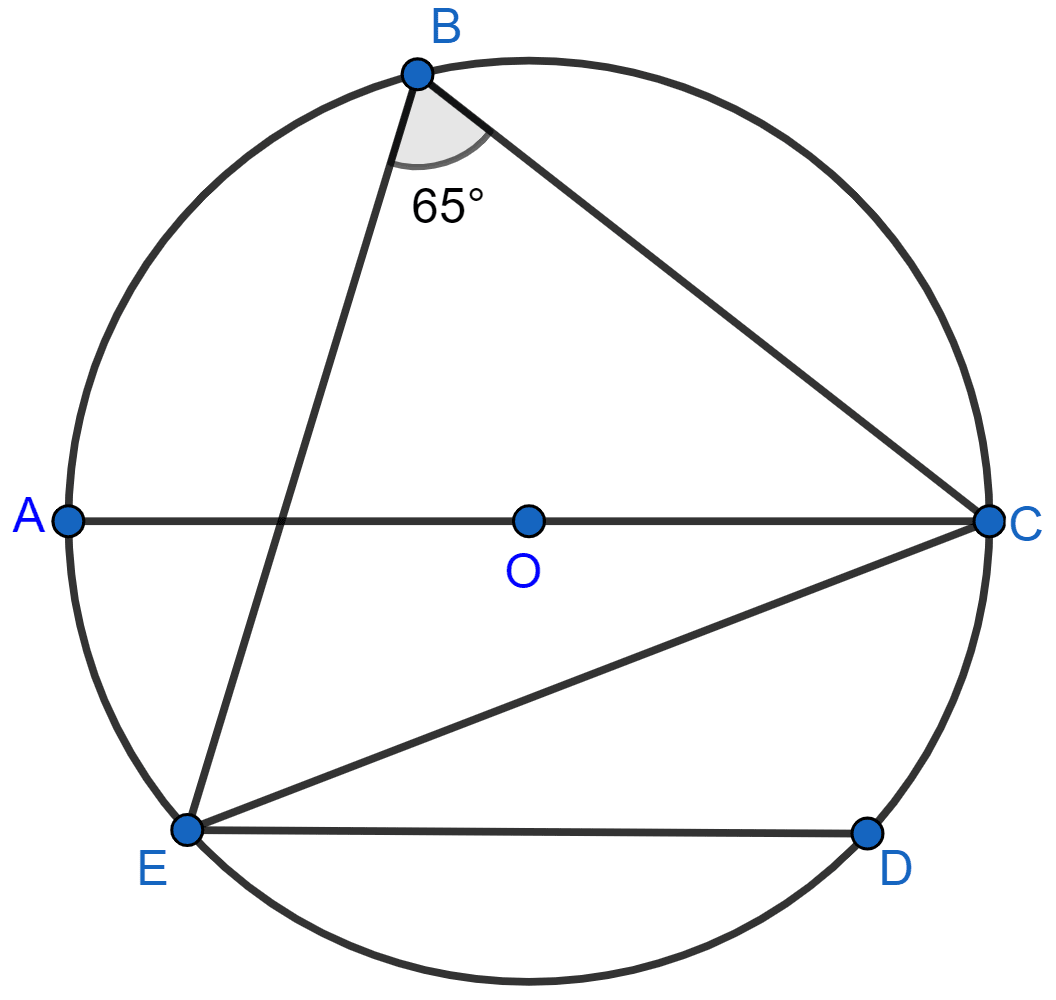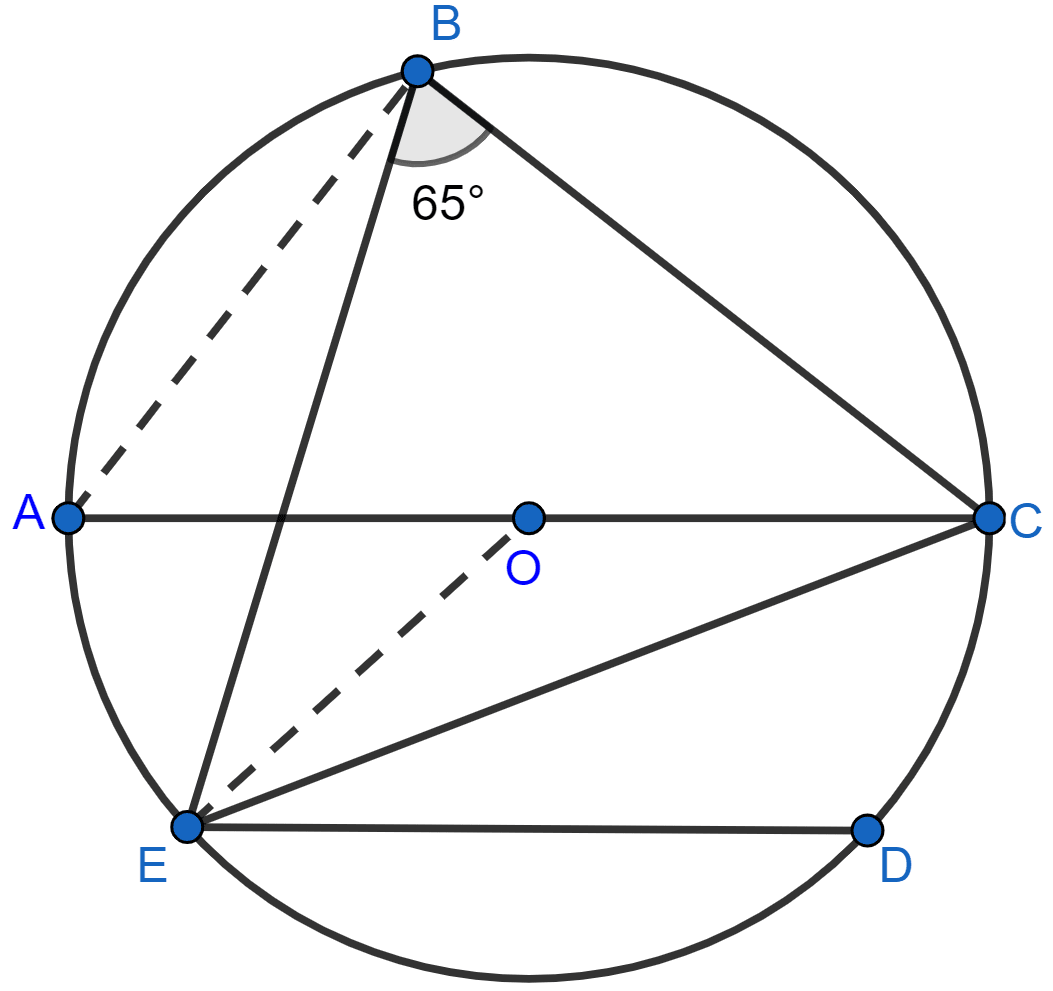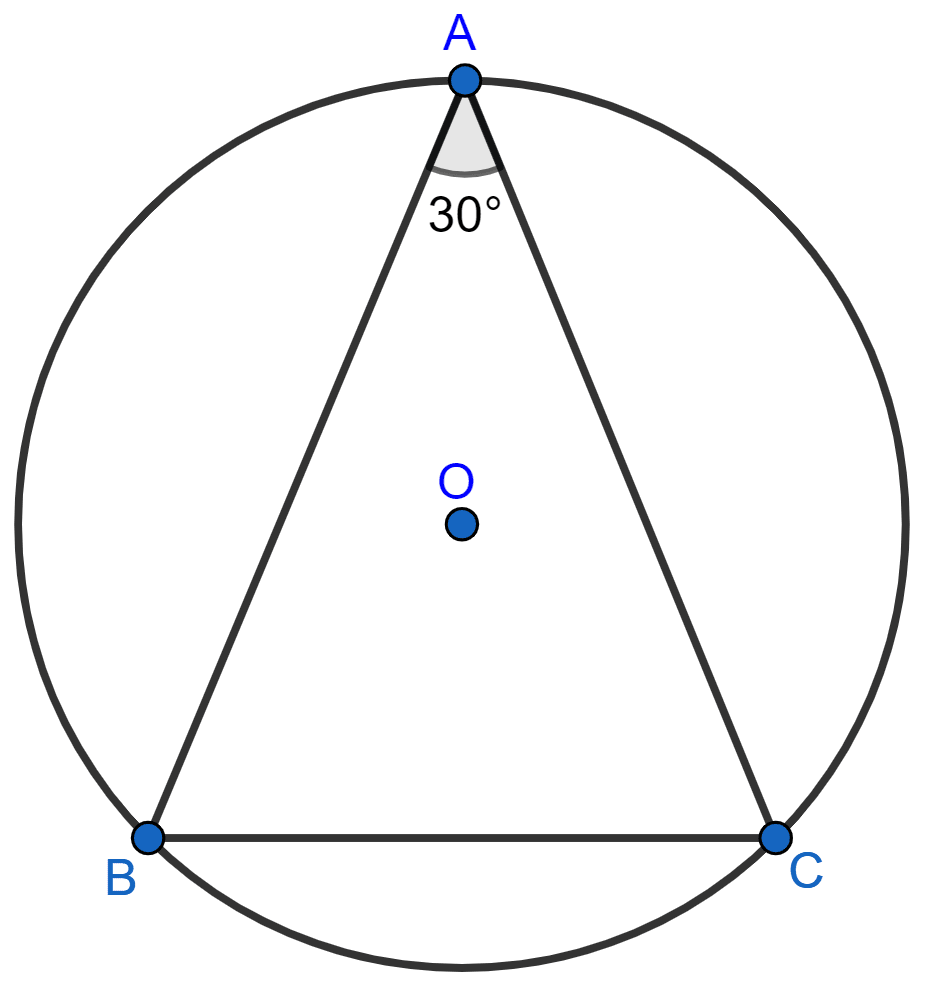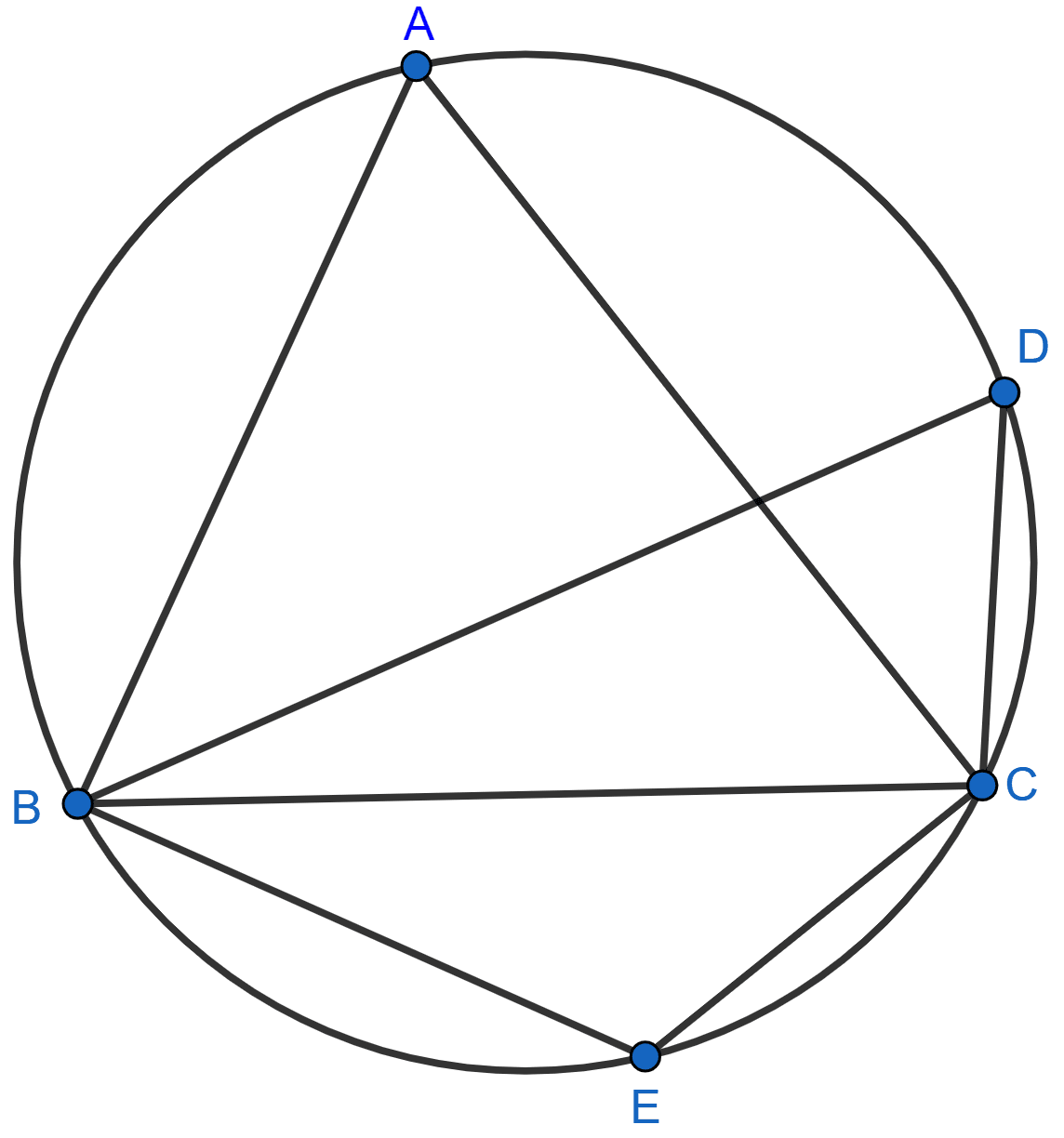Mathematics
In the given figure, chord ED is parallel to diameter AC of the circle. Given ∠CBE = 65°, calculate ∠DEC.

Circles
14 Likes
Answer
Join OE and AB.

Arc EC subtends ∠EOC at the centre and ∠EBC at the remaining part of the circle.
We know that,
Angle at the centre is twice the angle at remaining circumference.
∴ ∠EOC = 2∠EBC = 2 x 65° = 130°.
Now, in ∆OEC
OE = OC [Radii of the same circle]
So, ∠OEC = ∠OCE [Angle opposite to equal sides are equal.]
In ∆OCE by angle sum property,
⇒ ∠OEC + ∠OCE + ∠EOC = 180°
⇒ 2∠OCE + 130° = 180°
⇒ 2∠OCE = 180° - 130°
⇒ 2∠OCE = 50°
⇒ ∠OCE = = 25°.
Given, AC || ED
∴ ∠DEC = ∠OCE [Alternate angles are equal]
⇒ ∠DEC = 25°.
Hence, ∠DEC = 25°.
Answered By
6 Likes
Related Questions
In the given figure, ABC is a triangle in which ∠BAC = 30°. Show that BC is equal to the radius of the circumcircle of the triangle ABC, whose centre is O.

Prove that the circle drawn on any one of the equal sides of an isosceles triangle as diameter bisects the base.
In the figure, ∠DBC = 58°. BD is a diameter of the circle. Calculate :
(i) ∠BDC
(ii) ∠BEC
(iii) ∠BAC

D and E are points on equal sides AB and AC of an isosceles triangle ABC such that AD = AE. Prove that the points B, C, E and D are concyclic.